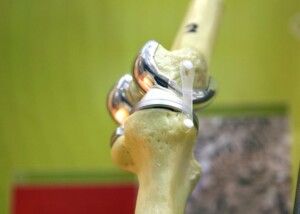Could there be any nonsurgical alternatives to knee revision surgery for a failed TKR?
After all, revision surgery involves just as much recovery time as the original operation.
Furthermore, knee revision surgery is more complicated than the original procedure, because the defective parts must be removed.
And there’s no guarantee that the revision won’t eventually become loosened or failed either.
Loosened Knee Replacements Can’t Repair Themselves on Their Own
“A loosened implant requires surgery to correct,” says Henry Boucher, MD, clinical instructor of Adult Reconstruction, Medstar Union Memorial Orthopaedics, Baltimore, MD.
There is just no way around this. The alternative is to live with pain, and the pain from a failed knee replacement will get worse. Your only recourse, unfortunately, is the revision surgery.
However, isn’t there anything that a person can do to take the edge off the pain if they decide not to have the knee revision surgery?
“For patients not willing or able to undergo surgery, a hinged brace and assistive device—cane, crutch, walker—can can help with comfort,” says Dr. Boucher.
Don’t confuse this with pain relief. The pain of a failed total knee replacement can be so significant that walking with these assistive devices will still be painful.
And even prescription painkillers will not be enough to make life bearable for some patients unless they decide to live their life out of a scooter or wheelchair.
In short, there are no non-surgical treatment alternatives for a failed or loosened knee replacement.
Warning Signs that Your Knee Replacement Implants Are Loosened
- Soreness, and especially a severe degree of pain, long after normal postop pain should have disappeared.
- Signs of an infected knee joint: fever, muscle aches, chills.
- Stiffness in the joint or a limited range of motion.
- Swelling or puffiness due to excess fluid in the joint.











































